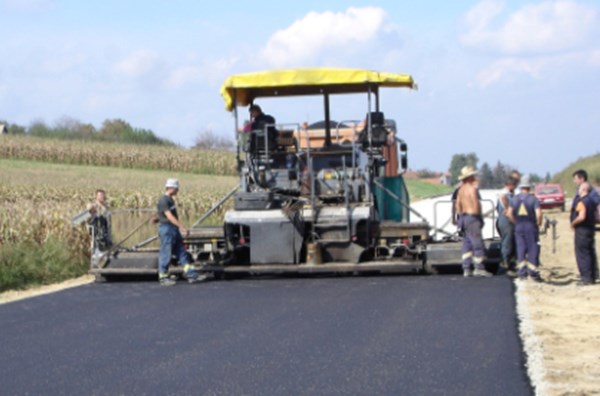Build and manage better road networks
Involvement of the World Road Association in the project
In early 1995, Anthony Pellegrini, Director Transport, Water and Urban Development Department at the World Bank contacted PIARC Secretary General, Bernard Fauveau, for involving PIARC regarding implementation of HDM-4. On the occasion of the XXth World Road Congress, in September 1995, a Steering Committee of ISOHDM project and a joint seminar prepared by the PIARC Committees on Technological exchanges and Development (C3) and Road management (C6) were held in Montreal. The seminar recommended in particular PIARC Committees C3 and C6 to collaborate with the World Bank in order to monitor the first implementations of the model.
In a letter to the Sponsors Committee, dated December 19, 1995, the World Bank (Anthony Pellegrini) made the following suggestions for the framework of the implication of PIARC:
“ The Steering Committee could be re-established under the PIARC umbrella;
-
The Sponsors Committee would continue as a bi-annual forum for the final sponsors to oversee the broad directions and outputs of the study… This committee could be chaired by the World Bank…For convenience of copyright management, if it is agreeable to the Sponsors, we propose that copyright for the study products be retained by the World Bank on behalf of the Sponsors for an interim period of at least two years.
-
Terms of reference for the PIARC staff function would need to be defined but could focus on supporting the Steering Committee in the technical oversight, review, quality control and dissemination of the study outputs…”
ODA’s answer dated January 3, 1996 states:
“We support the idea of the World Road Association taking a greater role in the future management of HDM-4 and we would be happy for the Steering Group to be re-established under the PIARC umbrella…
…we would be content for the Sponsors Committee to meet as you suggest under the chairmanship of the World Bank at least in the first instance. Consideration should be given to senior PIARC representatives on the Sponsors Committee. We have no objection, in principle, to IPR/Copyright being retained by the World Bank on behalf of the Sponsors for an interim period of two years but if progress with PIARC is satisfactory then consideration may be given to these rights being passed to PIARC in due course…”
A more detailed and refined outline of a possible framework for PIARC involvement in the management and coordination of ISOHDM was defined in a note from Chris Hoban (World Bank), Chairman of the Steering Committee, sent to PIARC on March 20, 1996. This mentioned:
“a)The Steering Committee could be re-established under the PIARC umbrella…
b)A full-time position of Program Director would be established at PIARC over the next three to four years, to provide day to day oversight of the study on behalf of the Steering Committee. ..
c)The Sponsors Committee would continue as a bi-annual forum for the financial sponsors to oversee the broad directions and outputs of the study. Some financial and other participation criteria should be established for new membership. While the long term goal would be to transfer ownership and management of the study products to PIARC, we propose that copyright for the study products be retained by the Sponsors for an interim period of two years.”
On this basis PIARC Executive Committee took the following resolution on March 26, 1996:
“The Executive Committee asked the General Secretariat to prepare by September 1996 a report and proposals for action to be taken following the request made by the World Bank regarding the HDM-4 model.”
From that moment on, PIARC General Secretariat examined how the Association could be involved to take the lead in overall development of ISOHDM, in consultation with the Steering Committee in particular its Vice-Chairman Raimo Tapio from FinnRA
In November 1996, PIARC Council (PIC) “approved the report by the Secretary General and agreed that the Association should start the HDM-4 project on condition the funds needed are raised. The PIC invited the President to seek direct or indirect funding necessary to start the project bearing in mind that it will be carried out over a period of at least three years. The PIC invites member countries and development banks to answer favourably to the call for funds that the President shall have to make.”
In April 1997, PIARC Executive Committee approved the following resolution:
“The Executive Committee approved the draft mandate for PIARC proposed by the Secretary General (reference: report entitled « HDM-4: presentation and role of PIARC »).
The Executive Committee noted the estimated funding needed to carry out the mandate set for PIARC (up to 1,250,000 US$) for three years. The President and Vice-Presidents were invited to pursue co-operation with the World Bank and other organizations to assist the funding of the project. Particular emphasis is to be placed on the funding of the co-ordinator, including the option of a loan project co-ordinator.
The Executive Committee also approved the procedure as regards the selection of the project co-ordinator.”
In November 1997, following an international call for candidacies, Mr. Neil Robertson from Mainroads department of Queensland, Australia, was nominated co-ordinator of the HDM-4 project for two years. Mr Robertson started working full-time at the Paris General Secretariat from August 1998.
An interim Co-ordinator was appointed from mid July 1997 until June 1998 to facilitate the transition of HDM-4 to PIARC and particularly to represent the views of the end users in the final development stages of the model prior to its general release.
Part of the development process involved the drafting of a business plan 1998-2003 developed to ensure continuous evolution of HDM-4, broaden dissemination and provide support to users. This included: provision of technical documentation, software services (warranty, maintenance, technical support, distribution, training,
This business plan which actually had a focus on the 1998-2000 period was reviewed by the ISOHDM Steering Committee in 1998.
The new Management structure was implemented in August 1998, coincident with the appointment of the full-time co-ordinator, and took the form of:
- A Sponsors Committee, chaired by the World Bank, as existed but which should be enlarged to new sponsors, including countries donating to PIARC;
- An “HDM-4 Committee”, chaired by Raimo Tapio from FinnRA, taking over the Steering Committee;
- An Operations Committee, chaired by PIARC Secretary General, made up of representatives from PIARC, WB, ADB, DFID and other contributors, guiding policy on dissemination and assistance for seminars and training courses.
In parallel a memorandum of agreement (MoA) was prepared in 1998 outlining proposed responsibilities of PIARC, World Bank and the University of Birmingham. After a meeting in Washington on January 1999, between John Flora, Chris Hoban (World Bank), Ian Heggie, Henry Kerali (University of Birmingham), Jean-François Coste, Nobu Nakao and Niel Robertson (PIARC) the revised final version of the MoA was circulated by PIARC in March 1999.
The MoA confirmed the new management structure:
- Sponsors Committee,
- PIARC Highways Development and Management Committee,
- ISOHDM Project coordinator who reports to PIARC Secretary General and is a member of the HDM Committee
- Operations Committee
- Project secretariat located at PIARC;
- Technical Secretariat located at the University of Birmingham.
The duration of the MoA was for two years 1998 to 2000.
Regarding ownership of Intellectual Property Rights (IPR) the MoA states:
“The Parties to this agreement acknowledge that ownership of IPR is a complex issue within this study, as many individual and corporate contributions to new knowledge have been made, for which no direct contractual relationship has existed to determine ownership of the IPR.
The Parties agree that ownership of publicly released ISOHDM products (defined below) lies jointly with the ISOHDM Sponsors. The Parties further agree to delegate the responsibility for management of the IPR associated with ISOHDM products to PIARC.”
It seems that there had been no meeting of the Sponsors Committee since then.
-
Find out about the technical support service offered by HDMGlobal to help users use HDM-4 effectively.
-
For existing HDM-4 users, view the latest software release and the changes made before registering to receive the updates.
-
Find out about HDM-4 training courses offered by HDMGlobal and their partner organisations and other related events.








